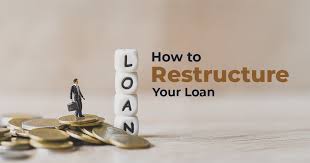In 2025, the debate surrounding student loans continues to be one of the most contentious topics in higher education and personal finance. With skyrocketing tuition fees, increasing student debt, and questions about the long-term financial returns of a college degree, many are questioning whether the investment in higher education is still worth it. As more and more students are burdened by debt, and as the job market continues to evolve, it’s crucial to evaluate if taking on a student loan is the right decision for today’s generation of students.
This article aims to provide a comprehensive look at the value of student loans in 2025, exploring the current economic landscape, the implications of student debt, and how the modern job market influences the decision to borrow money for education.
Key Takeaways
- Student loans can be a valuable investment in your future, especially for high-demand fields.
- Rising tuition costs and debt burden make careful planning essential.
- Alternative funding options such as scholarships, work-study programs, and community colleges should be explored.
- Loan forgiveness programs and flexible repayment options can ease the burden of student loans.
The Current State of Student Loans in 2025
In 2025, student loans are more of a reality than ever before. According to the Federal Reserve, the total student loan debt in the United States is estimated to surpass $2 trillion, affecting over 45 million borrowers. The average graduate leaves college with around $30,000 to $40,000 in student loans, but this number can vary significantly depending on the institution and degree pursued.
Despite the staggering figures, the question remains: Are student loans still a good investment?
The Benefits of Taking Out Student Loans

Student loans allow many individuals to access higher education, which is often seen as a stepping stone to better job opportunities and higher lifetime earnings. The benefits of taking out a student loan in 2025 are still notable, especially when weighed against the potential for significant personal and professional growth.
Access to Higher Education
The primary benefit of taking out student loans is the ability to attend college. Without student loans, many individuals would not be able to afford tuition, fees, and other expenses associated with higher education. In a society where a college degree is often necessary to enter high-paying professions, student loans can provide a gateway to opportunities that would otherwise be out of reach.
Long-Term Financial Return
A college degree remains one of the best ways to improve earning potential over a lifetime. According to the U.S. Bureau of Labor Statistics (BLS), individuals with a bachelor’s degree earn, on average, 67% more than those with only a high school diploma. The long-term return on investment (ROI) for a college education can significantly outweigh the costs of student loans, especially for individuals pursuing degrees in fields with high earning potential, such as engineering, computer science, and health care.
Career Advancement
In 2025, many careers require a bachelor’s degree as a minimum qualification. With student loans, individuals can pursue higher education that opens the door to professional fields in law, medicine, business, technology, and more. While it’s true that some industries may not require a college degree, those that do often offer higher starting salaries and more room for career growth.
Financial Aid and Loan Forgiveness Programs

Federal student loans come with benefits such as income-driven repayment plans and loan forgiveness programs. The Public Service Loan Forgiveness (PSLF) program, for example, allows borrowers to have their loans forgiven after 10 years of qualifying public service employment. Many employers also offer student loan repayment assistance as an employee benefit, making student loans more manageable in the long run.
The Downsides of Student Loans in 2025
| Downside | Details |
|---|---|
| Financial Strain on Borrowers | High student loan balances limit disposable income, delaying major life milestones such as homeownership, marriage, and starting a family. Each 1% increase in debt-to-income ratio can reduce consumer spending by 3.7%. |
| Mental Health Challenges | The burden of student debt is linked to increased anxiety, depression, and stress among borrowers, affecting both personal and academic well-being. |
| Delays in Loan Forgiveness Processing | As of April 2025, nearly 2 million borrowers are experiencing delays in the processing of their income-driven repayment (IDR) applications, leading to uncertainty about eligibility for affordable monthly payments. |
| Involuntary Collections Resumed | The U.S. Department of Education has resumed involuntary collections on defaulted federal student loans, including wage garnishment and tax refund seizures, affecting millions of borrowers. |
| Impact on Credit Scores | Missed student loan payments can significantly lower credit scores, with delinquencies averaging a 171-point drop for borrowers with excellent credit, potentially locking them out of mortgages and other loans. |
| Economic Consequences | Rising student loan debt has been compared to the housing bubble, reducing consumer spending, business growth, and homeownership, and potentially leading to broader economic instability. |
| Long-Term Repayment Burden | The average time to fully repay student loans is 18.5 years, with many borrowers unable to save adequately for retirement, leading to decreased financial security in later life. |
| Disproportionate Impact on Seniors | Over 2.9 million Americans aged 62+ face Social Security garnishment due to defaulted student loans, risking loss of essential income and financial hardship in retirement. |
| Limited Financial Freedom | Carrying student debt can limit graduates’ financial freedom and choices, forcing them into high-paying jobs they dislike and postponing significant life decisions due to financial constraints. |
| Complexity of Loan Terms | Navigating the complexities of student loans, including varying terms, interest rates, and repayment plans, can lead to confusion and missed payments, exacerbating the cycle of debt. |
While student loans can offer significant benefits, the downsides are hard to ignore. As the amount of student loan debt has ballooned, the impact on borrowers’ financial stability and mental well-being has become a serious concern.
The Growing Debt Burden
The most obvious downside of student loans is the debt burden. Many graduates find themselves struggling to pay off their loans, often for years or even decades after completing their education. With the average cost of college tuition increasing every year, student loan debt is growing at an unsustainable pace. According to the College Board, the average tuition for a private university in the U.S. is over $40,000 per year, and for public universities, it’s around $10,000 for in-state students and $25,000 for out-of-state students.
Delayed Financial Independence
Student loans can delay many financial milestones, such as buying a house, saving for retirement, or starting a family. Many borrowers in their 30s or 40s are still paying off student loans, making it difficult to achieve financial independence. This is especially true for individuals who pursued higher education in fields that don’t have a high earning potential or who have not been able to secure a well-paying job right out of college.
Mental and Emotional Stress
The emotional toll of carrying student loan debt is significant. According to a 2024 study by the American Psychological Association, over 60% of individuals with student loan debt report feeling stressed or anxious about their financial situation. This stress can have long-term effects on mental health and overall well-being.
Rising Interest Rates
Interest rates on student loans are another challenge for borrowers. With inflation and changes in the Federal Reserve’s monetary policy, interest rates on federal and private student loans have risen in recent years, adding to the overall cost of education. These rising interest rates can make paying off loans more difficult, particularly for borrowers who took out loans at higher rates.
How the Job Market Affects the Value of Student Loans
The job market in 2025 is vastly different from what it was in the past. Technology, automation, and remote work are transforming industries, creating new opportunities, but also new challenges. This shift impacts the value of student loans, as certain degrees may no longer guarantee the high-paying jobs they once did.
High-Demand Industries
In 2025, industries such as technology, healthcare, and renewable energy are booming. Fields like software development, data science, artificial intelligence, and cyber security are seeing massive growth, with high-paying opportunities available for qualified candidates. Individuals with degrees in these fields can often expect to pay off their student loans quickly and see substantial returns on their investment.
The Decline of Traditional Industries
At the same time, traditional industries such as manufacturing, retail, and even some areas of finance are experiencing a decline. In these industries, a college degree may no longer provide the same return on investment. Individuals pursuing degrees in fields with shrinking job markets may struggle to find employment, resulting in a longer repayment period for their loans.
Gig Economy and Entrepreneurship
The rise of the gig economy and entrepreneurship means that many young people are opting to create their own businesses or freelance instead of following a traditional career path. While this offers flexibility and potential for significant earnings, it can also be risky. Many entrepreneurs and freelancers still find it difficult to generate consistent income in the early years, and student loan payments can become a burden if their business does not succeed.
Alternative Ways to Finance College in 2025
As the cost of higher education continues to rise, many students are seeking alternatives to traditional student loans. Scholarships, grants, and work-study programs are more important than ever. Additionally, more and more students are considering attending community colleges or pursuing vocational training programs as more affordable options.
Scholarships and Grants
Scholarships and grants provide an opportunity for students to receive financial aid without taking on debt. In 2025, many organizations and universities offer merit-based and need-based scholarships that can cover part or all of a student’s tuition. Grants, particularly federal Pell Grants, can also be a crucial source of non-repayable aid.
Work-Study Programs
Work-study programs allow students to work part-time while attending school, helping them pay for their education without relying on student loans. These jobs can offer flexibility and valuable work experience, making it easier for students to balance their academic and financial responsibilities.
Community Colleges and Vocational Schools
Community colleges and vocational schools are becoming increasingly popular as affordable alternatives to traditional four-year universities. These institutions offer specialized programs and certifications in fields like healthcare, information technology, and trades, which can lead to good-paying jobs with relatively low tuition costs.
Also Read: How Much Student Loan Debt Is Too Much?
Conclusion
Student loans in 2025 present both opportunities and challenges. While they can provide access to higher education and improve long-term earning potential, the burden of debt can delay financial independence and cause emotional stress. The decision to take out student loans should be made carefully, with consideration of the field of study, the job market, and available repayment options.
FAQs
- Is it worth going into debt for a college degree?
It depends on the field of study and the earning potential associated with your degree. For high-demand fields such as engineering or technology, the investment is often worth it. However, for degrees in fields with lower earning potential, the return on investment may not justify the debt. - What is the average student loan debt in 2025?
The average student loan debt in 2025 is estimated to be between $30,000 and $40,000, although this can vary depending on the school and program. - Can I get my student loans forgiven?
Yes, there are loan forgiveness programs available, such as Public Service Loan Forgiveness (PSLF), where loans are forgiven after 10 years of qualifying public service employment. - How long does it take to pay off student loans?
The time it takes to pay off student loans varies based on the loan amount, interest rates, and repayment plan. On average, borrowers take between 10 to 30 years to repay their loans. - What are the alternatives to student loans?
Alternatives include scholarships, grants, work-study programs, and attending community colleges or vocational schools. - Can I refinance my student loans?
Yes, refinancing allows you to combine multiple loans into one loan, potentially securing a lower interest rate. However, refinancing federal loans with a private lender may result in the loss of federal loan benefits. - What happens if I default on my student loans?
Defaulting on student loans can result in wage garnishment, tax refund seizures, and a damaged credit score. It’s important to explore repayment options and seek help if you’re struggling.




